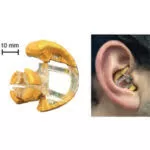In a groundbreaking development, engineers at the University of California, Berkeley, have unveiled prototype earbuds designed to detect signs of drowsiness in the brain. This innovation aims to protect drivers and machine operators from the significant hazard of drowsy driving, a critical issue that contributes to numerous road accidents worldwide.
The cutting-edge earbuds function similarly to an electroencephalogram (EEG), measuring brain waves through built-in electrodes that make contact with the ear canal. Although the electrical signals detected are smaller than those recorded by traditional EEGs, the new study demonstrates that the Ear EEG platform is sensitive enough to detect alpha waves, a brain activity pattern that increases as drowsiness sets in.
“I was inspired when I bought my first pair of Apple’s AirPods in 2017. I immediately thought what an amazing platform for neural recording. We believe this technology can classify drowsiness, indicating its potential to classify sleep and diagnose sleep disorders,” said Rikky Muller, Associate Professor of Electrical Engineering and Computer Science at UC Berkeley.
Creating an earbud suitable for a variety of ear sizes and shapes posed significant challenges. While other groups have used wet electrode gels or custom-moulded earpieces, Muller’s team aimed for a dry, user-generic model that could be used by anyone.
“My goal was to create a device usable every day by those who would benefit from it,” said Ryan Kaveh, the designer of the earpiece.
Kaveh designed the earpiece in three sizes. The design includes multiple electrodes applying gentle pressure to the ear canal, ensuring a comfortable fit, with signals read through a low-power, wireless interface.
In their research paper, the team demonstrated that the earpieces could detect physiological signals, including eye blinks and alpha brain waves. The study incorporated machine learning to validate the earpieces’ real-world application. Nine volunteers wore the earpieces while performing tasks in a darkened room, periodically rating their drowsiness and response times.
“We found that even with seemingly lower signal quality, we could classify drowsiness onset as accurately as with more complex systems,” Kaveh said. The earpieces’ accuracy in new users suggests they could work ‘out of the box’.
The researchers are also exploring other applications for the earbuds, including recording heartbeats, eye movements, and jaw clenches, potentially broadening the device’s utility in various health and safety scenarios.
This innovative development represents a significant step forward in combating the dangers of drowsy driving and enhancing overall road safety. As the technology advances, it holds promise not only for drivers but also for broader applications in sleep disorder diagnostics and beyond.












